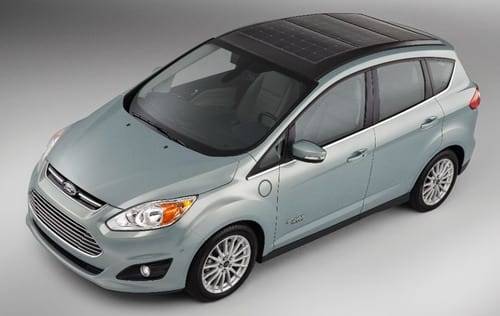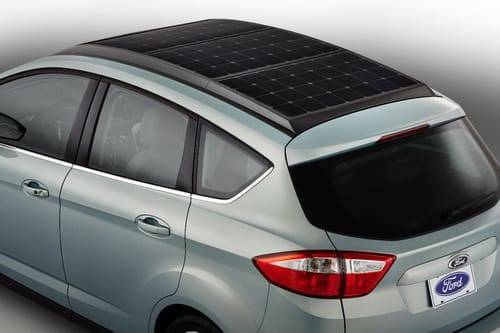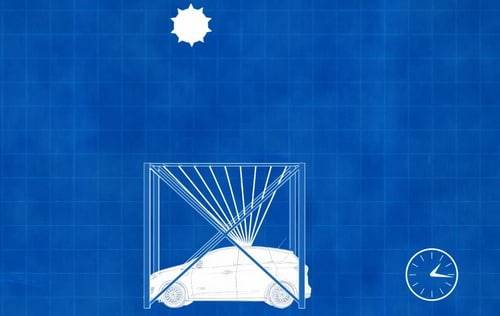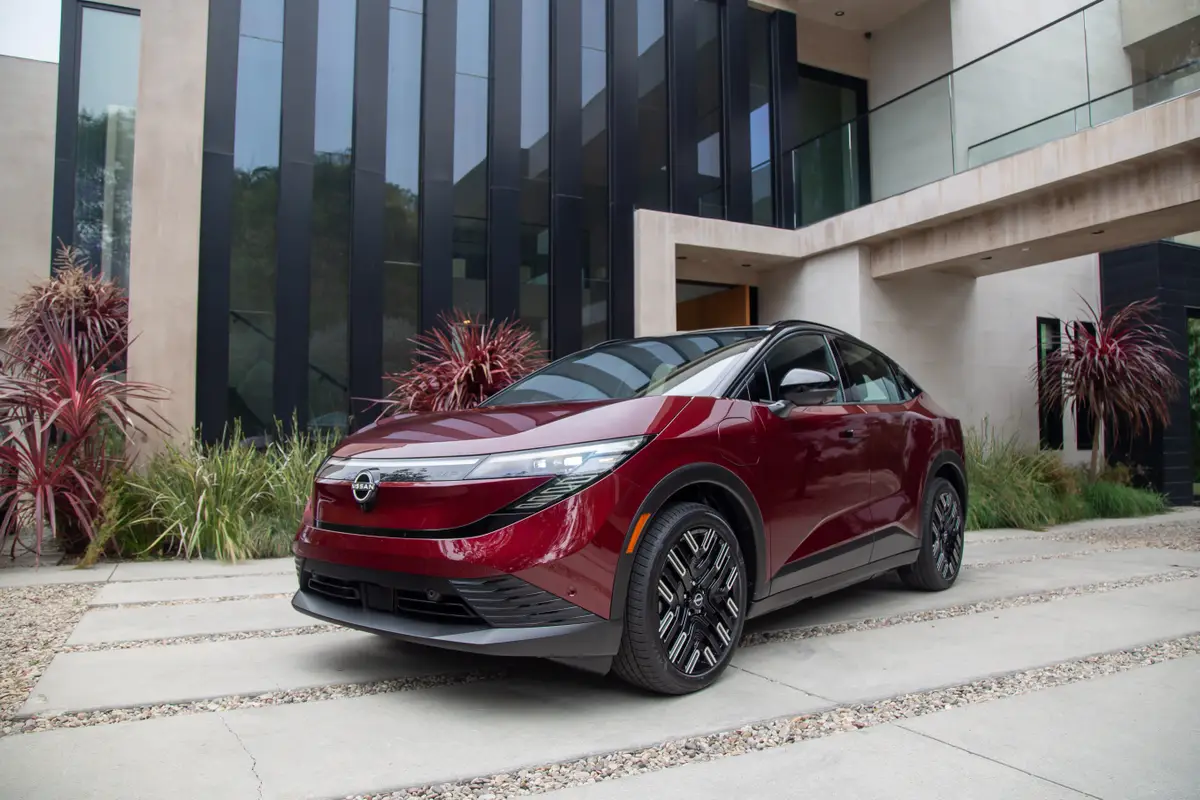Ford C-Max Solar Energi Concept at the 2014 International Consumer Electronics Show


Looks like: An accessorized C-Max Energi
Defining characteristics: Solar panels atop the roof
Ridiculous features: A solar-magnifying canopy the car has to sit under
Chances of being mass-produced: There’s potential; Ford plans real-world feasibility testing
What’s a petawatt? It’s a unit of energy equivalent to 1 billion megawatts or 1 million gigawatts (yes, Doc Brown used real units). And Mike Tinskey, Ford’s director of vehicle electrification, says 174 of them hit the Earth each day in the form of solar energy. Toward that end, Ford wants to collect some of that energy with 1.5 square meters of solar photovoltaic panels atop the C-Max Energi. Witness the solar-powered adaptation of the plug-in hybrid that went on sale in fall 2012: the C-Max Solar Energi Concept.
The concept’s flexible, high-density silicone solar panels come courtesy of San Jose, Calif.-based SunPower Corp. — and those panels harvest 50 percent more density than conventional solar cells, Ford claims. Still, the cells alone won’t charge the C-Max Energi to its full battery, which enables up to 21 miles of the electric vehicle’s driving range.
“Alone, that solar [panel] will only generate about 300 watts of power, which is not enough to fully recharge the battery in one day,” Tinskey said in a video posted by Ford. Such is the case for other solar-paneled cars, from the erstwhile Mazda Millenia to the current Toyota Prius, which use solar cells to run cabin ventilation when the car is parked. In the Prius, the effect on electric-only range is negligible.
Ford’s solution? Couple the solar panel with a “solar concentrator” developed by the Georgia Institute of Technology — essentially a carportlike canopy that magnifies solar rays onto the car’s roof. As the sun moves from east to west, the C-Max Solar Energi Concept creeps a few feet in the opposite direction underneath the canopy to maximize rays, and the resulting magnification recharges the Energi’s 7.6-kilowatt-hour lithium-ion battery from zero to 100 percent in a full day of sunlight.
Obviously, the recharging potential falls as you drive the car, as opposed to leaving it under its canopy sunbath. The canopy makes the most sense at an outdoor parking facility during work or outside your home on weekends — in a sunny climate, to boot. The C-Max Solar Energi would have to employ various perimeter-sensing safeguards to ensure its daytime creeping avoids running over a napping Fido, too. And we imagine that, over time, the solar concentration would accelerate paint damage.
But we like the possibilities, particularly since the C-Max Solar Energi retains its extant capabilities. You can still plug the Energi into an outlet to charge the battery, and the hybrid gas-electric drivetrain still powers the car after the EV range taps out.
Ford will show the C-Max Solar Energi concept at the 2014 International Consumer Electronics Show in Las Vegas on Jan. 7-10. The automaker plans to begin real-world testing thereafter to determine production possibilities. It’s unclear how much the panels would add in terms of cost to the C-Max Energi, which starts at $33,745 including the destination charge but before any tax incentives.
The 2014 Prius’ solar roof runs $1,500 as a stand-alone option. No doubt the C-Max Solar Energi’s system would add more. The solar panels cover a lot more space, for one. Then there’s the additional cost of the canopy magnifier. It’s “too soon to speculate” on cost, a Ford spokesman told the Detroit News, but the automaker downplayed the canopy’s expense.
“It’s a very low-cost canopy,” Tinskey said in Ford’s video. It’s “still using the same amount of solar on top of the roof, but [it’s] getting that magnification that comes from low-cost infrastructure.”


Related
How Can I Improve Fuel Economy in the 2013 Ford C-Max?
Ford to Reimburse C-Max Owners for MPG Discrepancy
More Ford News

Former Assistant Managing Editor-News Kelsey Mays likes quality, reliability, safety and practicality. But he also likes a fair price.
Featured stories




